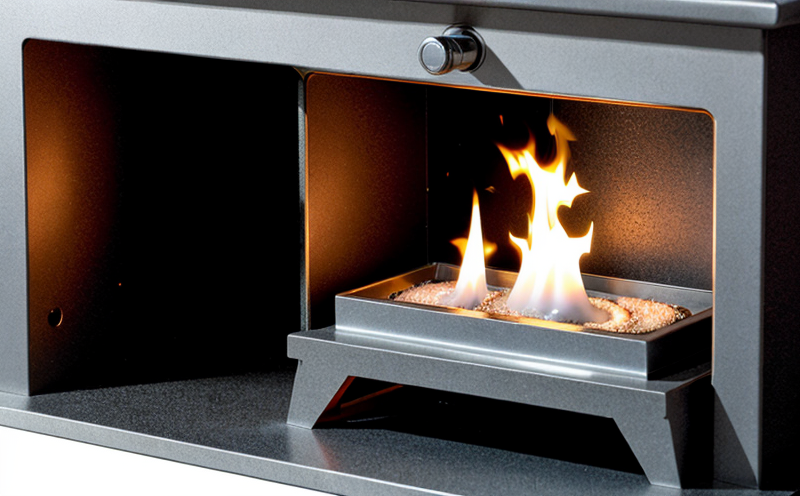Ignitability Testing of Household Appliances
In the realm of fire safety testing, ignitability testing is a critical process that ensures household appliances meet stringent standards for flammability and resistance to ignition. This service focuses on evaluating products like stoves, ovens, refrigerators, dishwashers, and other devices found in residential settings. Compliance with these tests is essential not only for product safety but also to prevent potential fire hazards.
The process begins with the selection of appropriate specimens based on the intended use of the appliance. Specimens are carefully prepared according to international standards such as ISO 6947 or ASTM E84, which provide detailed guidelines for testing procedures and acceptance criteria. The testing apparatus used includes a vertical tunnel furnace designed specifically for surface flame spread measurements.
The procedure involves placing the specimen in the furnace where it is exposed to radiant heat from two sides at varying levels of intensity. Observations are made on how quickly and how far flames can propagate across the surface of the material. This helps determine whether the appliance could ignite easily or spread fire under typical usage conditions.
Once testing concludes, detailed reports are generated detailing all observations and results. These reports often include graphical representations like flame spread indices (FSI) which quantify how fast flames travel along surfaces. Compliance with specific limits set by regulatory bodies ensures products meet necessary safety requirements before being placed on the market.
This service plays a crucial role in safeguarding consumers by preventing accidents related to faulty or poorly designed household appliances. By adhering strictly to international standards and using advanced testing equipment, we provide reliable data that supports informed decision-making throughout product development cycles.
Our team of experts ensures every aspect of the testing process aligns with current best practices, ensuring accurate results that are both repeatable and reproducible. With ongoing advancements in technology and materials science, staying ahead of changing regulations is paramount for manufacturers seeking to maintain high levels of quality assurance.
International Acceptance and Recognition
The ignitability testing service described above enjoys widespread international recognition due to its adherence to globally accepted standards. Notably, ISO 6947 and ASTM E84 are widely used by laboratories around the world because they establish consistent methodologies for assessing flame spread and ignition resistance.
These standards ensure that regardless of where a product is manufactured or sold, it undergoes similar rigorous evaluations to guarantee safety. Compliance with such recognized protocols enhances trust among consumers who seek peace of mind knowing their appliances have been tested against established benchmarks.
Moreover, adherence to these international norms helps manufacturers meet regulatory requirements imposed by various countries and regions. For instance, the European Union's Construction Products Regulation (CPR) mandates compliance with certain flammability specifications for materials used in construction products, including those found within household appliances.
By participating in this standardized testing process, companies can ensure their products not only comply with local regulations but also gain acceptance across borders. This global consistency fosters fair competition and promotes safer environments worldwide.
Environmental and Sustainability Contributions
The significance of ignitability testing extends beyond mere safety concerns; it also contributes positively to environmental sustainability efforts. By ensuring that household appliances do not easily ignite or contribute to fire hazards, this service helps reduce the likelihood of accidental fires which can lead to significant damage to property and loss of life.
Additionally, promoting safer products reduces waste associated with recalls or premature disposal due to safety issues. It encourages manufacturers to design more durable goods that last longer and require fewer replacements over time - all factors contributing towards reducing the overall environmental footprint.
The use of advanced testing equipment allows for precise evaluation of materials used in appliance construction, helping identify potential improvements that enhance both performance and sustainability aspects. For example, selecting flame retardant polymers instead of traditional ones can significantly reduce flammability risks while maintaining structural integrity.
Overall, the ignitability testing service plays an integral role in advancing sustainable practices within the manufacturing industry by fostering innovation aimed at creating safer, more durable products that contribute positively to environmental well-being.
Use Cases and Application Examples
The application of ignitability testing spans various sectors including home appliances, commercial kitchen equipment, and even certain industrial machinery. For instance, in the case of ovens and stoves, it ensures that these devices do not pose a risk when exposed to ignition sources like sparks or open flames.
In refrigerators and freezers, this testing helps verify that insulation materials used are sufficiently flame-resistant to prevent accidental fires caused by electrical malfunctions. Dishwashers present another example where ignitability tests ensure that the interior components do not catch fire during normal operation.
For commercial kitchens, which often involve high heat and flammable liquids, rigorous testing is essential to safeguard against potential explosions or spreading of flames beyond intended areas. By implementing this service effectively, manufacturers can address these challenges head-on, thereby enhancing overall safety standards across diverse applications.





